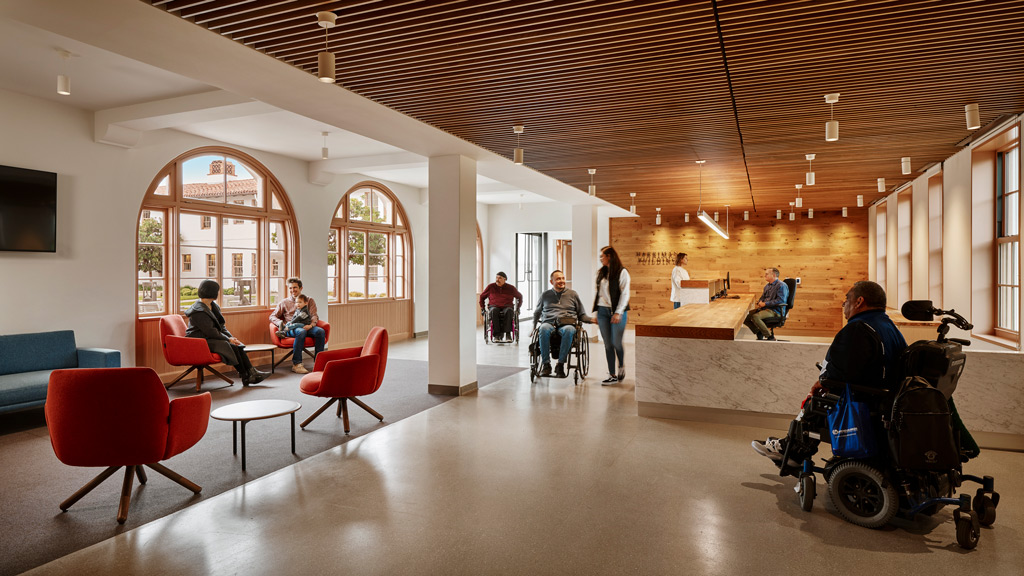5 Trends Changing the Shape of Healthcare Design
June 01, 2023 | By Tatiana Guimaraes
Editor's Note: This article was originally published in Healthcare Design Magazine under the headline "Take 5 with Gensler's Tatiana Guimaraes." As a leader in Gensler's healthcare practice, here she shares her thoughts on five trends that are currently influencing design in the industry.
1. Rethinking the design process
Today’s design landscape is being underlined by market uncertainty, rising construction costs, and early procurement of materials and equipment. This is challenging designers to adapt and rethink their thought process when implementing traditional schematic design, design development, and construction documentation processes to help clients meet their scheduling goals and budget. For example, items that normally would be defined in construction documents, such as millwork quantities or generator specifications, can now be completed ahead of schedule. Another approach is to create flexible and modular designs that consider prefabrication solutions (from headwalls to bathrooms). Creating these types of designs can also help address speed-to-market delivery as they can offer shorter construction schedules.
2. Lifestyle healthcare
CVS, Walgreens, Amazon, and Apple are among the latest companies entering the market to make healthcare more accessible and closer to home and work. But healthcare is more than accessibility and needs to be imbedded into people’s daily lives, integrated into communities, and focused on well-being. To achieve these goals, designing for experience—physically and virtually—is a must. The best health environments are designed to be inviting, varied, and multiuse, bringing healthcare professionals and patients together to improve healthcare delivery while reducing costs. Also, membership programs, con cierge medicine, and virtual care are playing new roles and innovating healthcare delivery models.
3. Maximizing a multichannel strategy
Personal health monitoring tools, telemedicine, and new in-clinic technologies such as artificial intelligence diagnostics are reinventing the relationship between patients, providers, and the built environment, providing valuable. Healthcare systems can learn from retail and hospitality to create more seamless, multichannel, and personalized digital patient experiences, both remotely and in person. Just like the Nike store in New York where you can start your shopping online, go to the store to try on a shoe, and pay with your phone as you leave, the healthcare process could be similar. This experience could start with a virtual doctor visit using health monitoring tools, followed by diagnostics done in-person, and then wrap up with a telehealth consult. An effective omnichannel strategy also will deliver useful and reliable information, forward-focused insights, and streamlined communication across all relevant channels.
4. Social equity
Ensuring that the most vulnerable and underserved communities have access to spaces for treatment begins with a quality design that supports the well-being of everyone. As designers, we have an obligation to protect the health, safety, and welfare of the general public across all social-economic classes—and it’s important that projects reflect the very same communities they are in. By building diverse teams of designers who can bring unique experiences, considerations, and voices to the design process, we can truly create healing environments that serve all users.
5. Reduce, reuse, and recycle
Strategies such as leveraging renewable energy and reducing building-related emissions and energy consumption are a few of the ways that sustainability has been addressed in the healthcare sector. Additionally, we’re starting to see more healthcare clients repurpose existing structures such as former big-box retail stores for new outpatient facilities. This approach can decrease the amount of carbon associated with new materials and reduce waste going to landfills by using the building’s original materials and structure. Adaptive reuse also offers economic benefits such as optimizing financial returns by capitalizing on reduced development costs (as opposed to ground-up construction costs).
For media inquiries, email .

